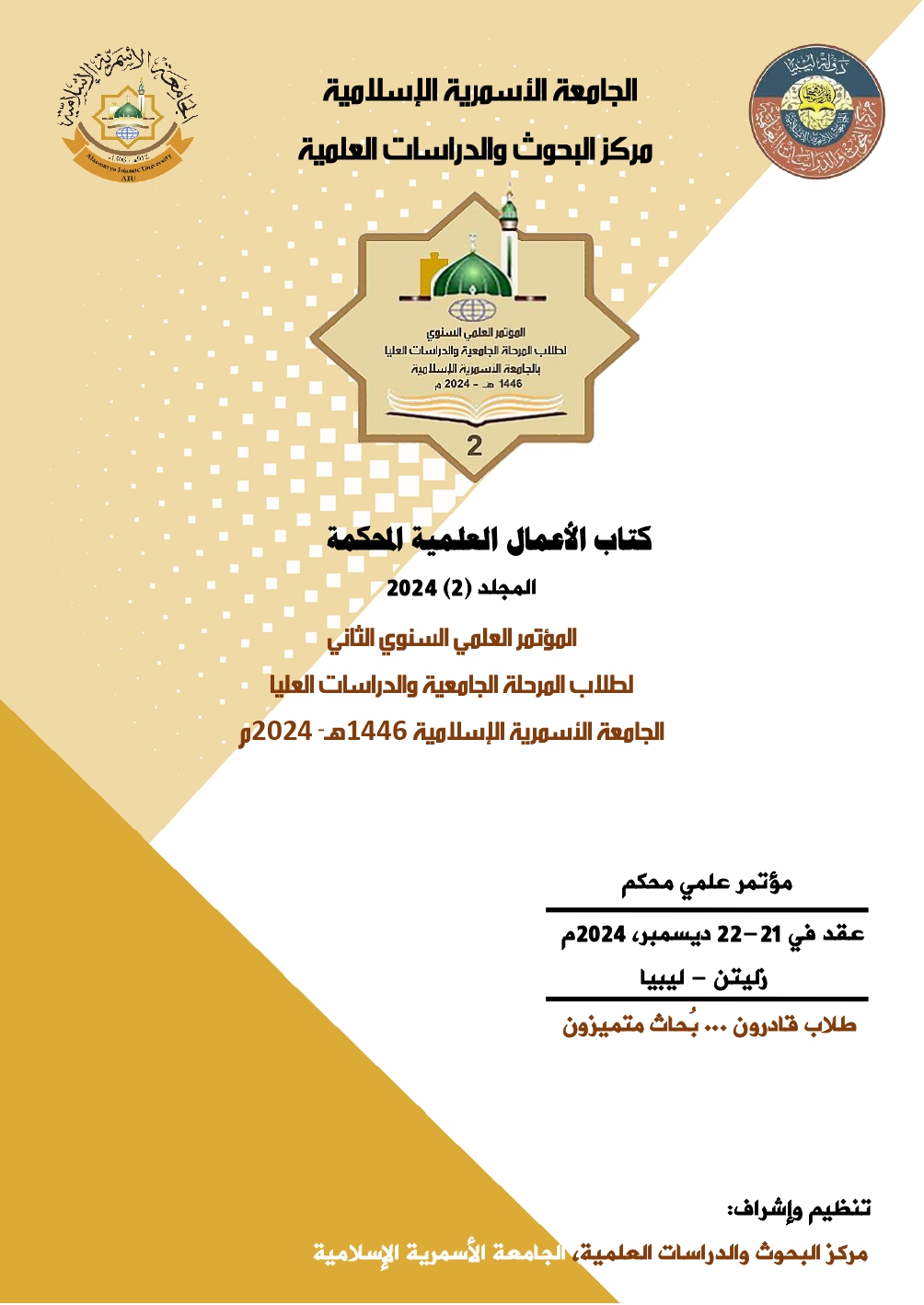Isolate and Diagnose the Bacteria that Cause Inflammation of Wounds after Surgery in Zliten Medical Center
Keywords:
Diagnosis, Infection of wounds, Surgical, AntibioticsAbstract
Collected 50 samples taken from patients suffering from infections of surgical wounds in Zliten Teaching Hospital of Zliten over the months of August and September where they were conducting 662 surgeries during the study period. These samples were planted on cultures media for the purpose of isolation and diagnosis bacterial etiology, and then bacterial farms were subjected to microscopic examination and testing sensitivity to antibiotics and the results showed bacterial growth to occur by 96% where the bacteria Staphylococcus spp strain prevalent in this study, 48%, followed by bacteria Pseudomonas spp 22%, then the bacteria Klebsiella spp by 13.3% , Proteus spp , Escherichia coli , Citrobacter spp and Streptococcus spp at rates of 6.7%, 4.4%, 2.2%, 2.2%, respectively, also show a mixed samples carrying two types of bacterial etiology of 6%. Antibiotic sensitivity test results also showed that all types of bacteria isolated were sensitive to antibiotics Amikicine Polymexin, Ciprofloxacillin, Gentamicin, and Tetramycin variable rates while the resistance, and high rates of antibiotics Amoxicillin, Amipicillin, and Augmantin. The study also showed that females were more susceptible to the infection after the operation increased by 66.6%, and also show that the age group of 25-40 were more a class exposed to infection of wounds after surgery, it turns out that the incidence of inflammation rate for the total number of operations during the study period 6.7% and the index is not considered dangerous because of going through the country from crises in the lack of medical supplies and health care.
Downloads
References
أولاً: المراجع باللغة العربية
الراوي، ظافر فخري؛ الحمداني، هبة الله عادل؛ المولى، سليم عبيد (2009). دراسة دور البكتيريا الهوائية واللاهوائية في التهاب الجروح بعد العمليات النسائية في مدنية الرمادي. مجلة جامعة الانبار للعلوم الصرفة، 3(2).
عبدالله، رنا المجاهد؛ عبدالله، أروى مجاهد (2009). دراسة التأثير الخلطي لمضاد السيفتازديم مع EDTA على بعض أنواع البكتيريا المسببة للالتهاب الجروح. مجلة جامعة الانبار للعلوم الصرفة، 3(3).
ثانياً: المراجع باللغة الإنجليزية
Bauman, R. W. (2014). Microbiology with diseases by body system. Pearson Higher Ed.
Bessa, L. J., Fazii, P., Di Giulio, M., & Cellini, L. (2015). Bacterial isolates from infected wounds and their antibiotic susceptibility pattern: some remarks about wound infection. International wound journal, 12(1), 47-52.
Esebelahie, N. O., Newton-Esebelahie, F. O., & Omoregie, R. (2013). Aerobic bacterial isolates from infected wounds. African Journal of Clinical and Experimental Microbiology, 14(3), 155-159.
Kumar, S. (2012). Textbook of microbiology. JP Medical Ltd.
Prabha, S. P., Rani, D. M., Lakshmi, K., Chitralekha, S., & Illamani, V. (2015). Study of Bacteriological Etiology of Wound Infections. RESEARCH JOURNAL OF PHARMACEUTICAL BIOLOGICAL AND CHEMICAL SCIENCES, 6(2), 270-274.
Downloads
Published
Conference Proceedings Volume
Section
License

This work is licensed under a Creative Commons Attribution-NonCommercial-NoDerivatives 4.0 International License.





